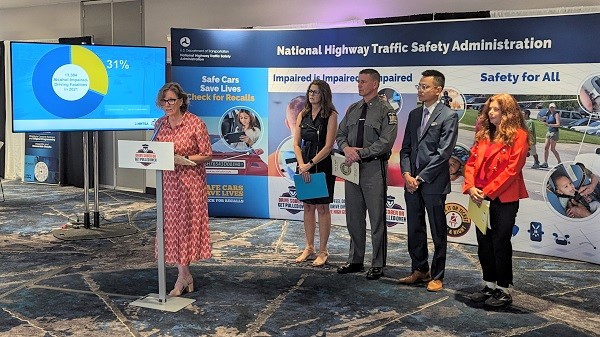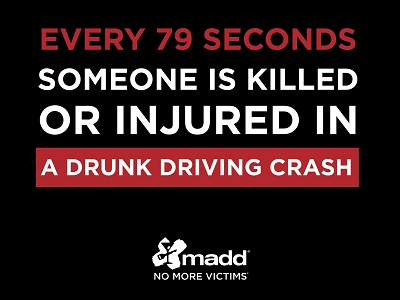Alcohol-Impaired Driving


Alcohol impairment – or drunk driving – is a factor in nearly one-third of all traffic fatalities. Someone was killed in an alcohol-impaired-driving crash an average of every 38 minutes in 2022. Drunk driving deaths have skyrocketed 33% in just three years, rising from 10,196 in 2019 to 13,524 in 2022 (Overview of Motor Vehicle Traffic Crashes in 2022, National Highway Traffic Safety Administration [NHTSA]).
State and local law enforcement officials work year-round to identify alcohol-impaired drivers and get them off our roads. At specific times throughout the year, these efforts are amplified through the national drunk driving crackdown, Drive Sober or Get Pulled Over, organized by NHTSA. GHSA's member State Highway Safety Offices (SHSOs) work with their state and local law enforcement partners on this campaign, which combines high-visibility law enforcement with public awareness and education campaigns to deter or detect drunk drivers. Many states also conduct sobriety checkpoints throughout the year.
To reduce drunk driving crashes, injuries and fatalities, GHSA supports state legislative efforts to lower the per se Blood Alcohol Content (BAC) limit from .08 to .05. Only one state – Utah – currently has a .05 BAC limit. A 2022 NHTSA study found that after the state enacted a lower BAC limit, traffic deaths decreased and more drivers said they arranged for safe rides home. Meanwhile, researchers did not find any negative economic effects of the lower BAC limit in Utah.
Many drunk drivers are repeat offenders. To prevent those convicted of drunk driving from making the same bad decision again, ignition interlocks are often employed. These devices analyze a driver's breath and disable the engine if alcohol is detected. Judges can mandate that all or a portion of convicted drunk drivers install interlocks in their cars for a specified period of time. Nearly 12,000 roadway deaths could be prevented each year if alcohol detection systems, such as IIDs, were installed on all vehicles, according to a 2021 Insurance Institute for Highway Safety study.
Currently, all states have some type of ignition interlock program, with 33 states and the District of Columbia having a compliance-based removal law. Under these laws, drivers with an interlock installed in their vehicle must have a certain number of violation-free days before the device can be removed. A 2023 study conducted for GHSA found that compliance-based removal laws can help reduce repeat drunk driving offenses. Researchers found that, between January 1, 2016, and December 31, 2019, alcohol-impaired driving recidivism rates in two states with these laws (Tennessee, 1.7%; Washington, 3.7%) were notably lower than two states without them (Arkansas, 5.6%; Iowa, 6%).
NOTE: California's Ignition Interlock Device Pilot Program for repeat and first-time injury-involved offenders is now statewide.
NOTE: GHSA does not compile any additional data on drunk driving laws other than what is presented here. For more information, consult the appropriate State Highway Safety Office (SHSO).
Sources: Ensuring Solutions to Alcohol Problems, Insurance Institute for Highway Safety, Mothers Against Drunk Driving, National Conference of State Legislatures and SHSOs.
Last updated in October 2025. Laws last reviewed by SHSOs in June 2025.

NHTSA Acting Administrator Ann Carlson speaks at a Drive Sober or Get Pulled Over press conference at the GHSA 2023 Annual Meeting on August 15.
